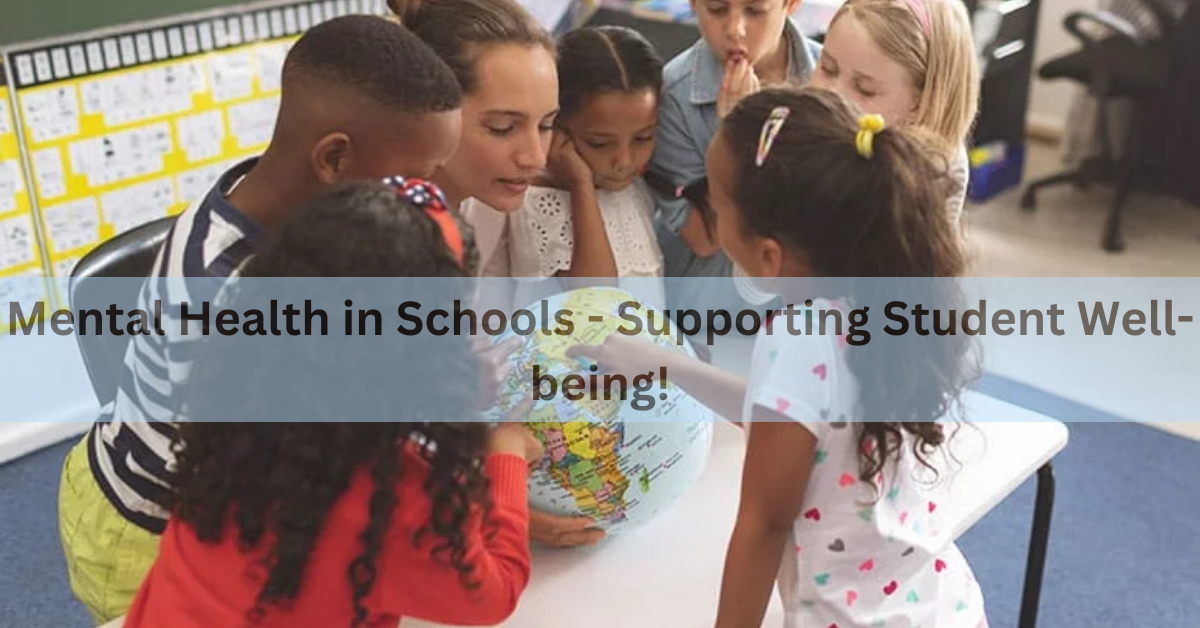Supporting student mental health has become a critical focus for schools worldwide. As students face increasing academic pressures, social challenges, and personal struggles, schools must create an environment that promotes mental well-being. This article explores various strategies and approaches to support student mental health, highlighting the importance of a holistic approach to education that prioritizes mental well-being alongside academic success.
Recognizing the Importance of Mental Health in Education
Mental health significantly impacts students’ ability to learn, grow, and thrive. Poor mental health can lead to decreased academic performance, increased absenteeism, and behavioral issues. Conversely, a supportive environment that addresses mental health can enhance academic outcomes, improve social interactions, and foster resilience. Recognizing the importance of mental health in education is the first step toward creating a nurturing and supportive school environment.
Creating a Safe and Inclusive School Environment
Creating a safe and inclusive school environment is foundational to supporting student mental health. Schools should foster a culture of respect, acceptance, and empathy, where students feel valued and understood. Implementing anti-bullying policies, promoting diversity and inclusion, and encouraging open communication are essential steps. By creating a supportive atmosphere, schools can reduce stress, anxiety, and feelings of isolation among students.
Implementing Social-Emotional Learning (SEL) Programs
Social-Emotional Learning (SEL) programs equip students with the skills to manage emotions, build positive relationships, and make responsible decisions. SEL curricula can include lessons on self-awareness, empathy, conflict resolution, and stress management. By integrating SEL into the school day, educators can help students develop essential life skills that contribute to their overall well-being. Research shows that SEL programs improve academic performance, reduce emotional distress, and foster positive social behavior.
Providing Access to Mental Health Resources
Access to mental health resources is crucial for students who may be struggling with emotional or psychological issues. Schools should have trained counselors, psychologists, or social workers available to provide support and intervention. Offering confidential counseling services, mental health screenings, and crisis intervention can help address students’ needs promptly. Additionally, schools can collaborate with local mental health organizations to provide resources and referrals for more intensive support.
Encouraging Physical Activity and Healthy Lifestyle Choices
Physical activity and a healthy lifestyle play a significant role in maintaining mental well-being. Regular exercise can reduce symptoms of depression and anxiety, improve mood, and boost overall mental health. Schools should encourage physical activity through physical education classes, sports programs, and active recess periods. Promoting healthy eating habits, adequate sleep, and mindfulness practices can also contribute to students’ mental well-being. By encouraging a balanced lifestyle, schools can help students develop habits that support both physical and mental health.
Fostering Positive Teacher-Student Relationships
Positive teacher-student relationships are essential for creating a supportive learning environment. Teachers who build trust, show empathy, and maintain open communication can significantly impact students’ mental health. Providing professional development for teachers on recognizing signs of mental distress, fostering inclusive classrooms, and implementing trauma-informed practices is crucial. By fostering positive relationships, teachers can create a sense of belonging and security for students, helping them feel more supported and understood.
Integrating Mental Health Education into the Curriculum
Integrating mental health education into the curriculum helps normalize conversations about mental health and reduce stigma. Schools can include lessons on mental health awareness, coping strategies, and the importance of seeking help. Educating students about mental health empowers them to recognize and address their own mental health needs and support their peers. Schools can also organize mental health awareness events, workshops, and guest speaker sessions to further promote understanding and acceptance.
Engaging Families and Communities
Engaging families and communities in supporting student mental health is essential for creating a holistic support system. Schools should provide resources and workshops for parents on mental health topics, such as recognizing signs of distress and fostering open communication at home. Collaborating with community organizations, mental health professionals, and local businesses can enhance the support network available to students. By involving families and communities, schools can create a unified approach to supporting student well-being.
Promoting Mindfulness and Stress Reduction Techniques
Mindfulness and stress reduction techniques can help students manage anxiety, improve focus, and enhance emotional regulation. Schools can incorporate mindfulness practices, such as deep breathing, meditation, and yoga, into the daily routine. Teaching students about stress management strategies, such as time management, goal setting, and relaxation techniques, can also be beneficial. By promoting mindfulness and stress reduction, schools can equip students with tools to cope with challenges and maintain mental well-being.
Conclusion
Supporting student mental health is essential for creating a positive and effective learning environment. By recognizing the importance of mental health, creating a safe and inclusive school environment, implementing SEL programs, providing access to mental health resources, encouraging physical activity, fostering positive teacher-student relationships, integrating mental health education, engaging families and communities, and promoting mindfulness and stress reduction techniques, schools can significantly impact students’ well-being. A holistic approach to education that prioritizes mental health alongside academic success ensures that students are better equipped to thrive both in and out of the classroom. Embrace these strategies to foster a supportive, nurturing, and mentally healthy school environment.


